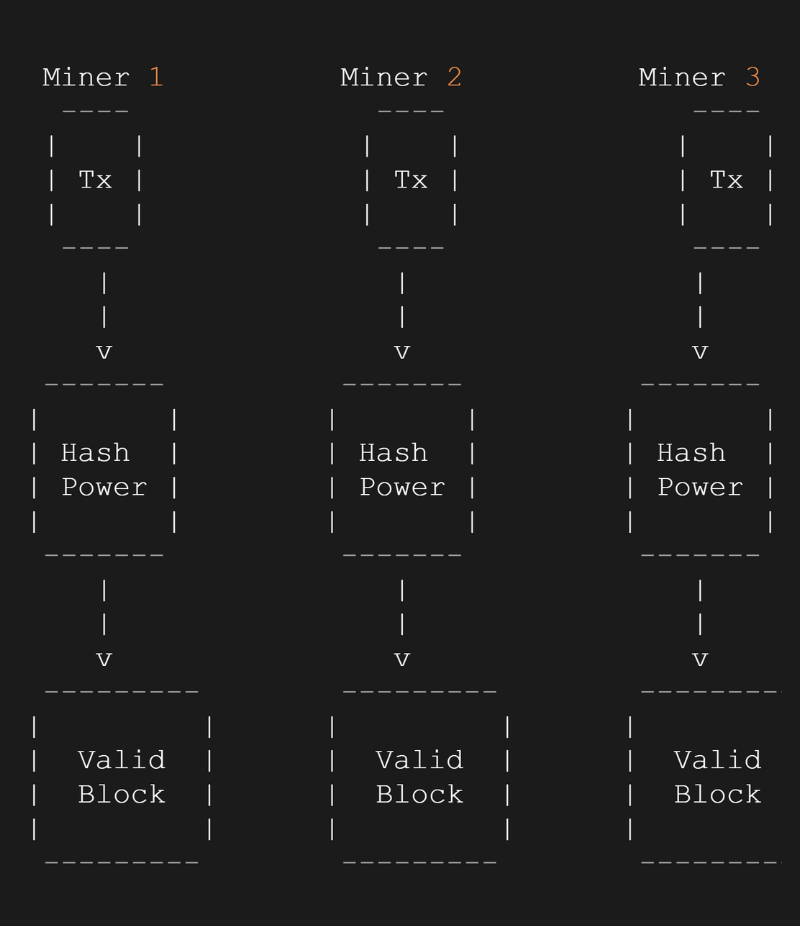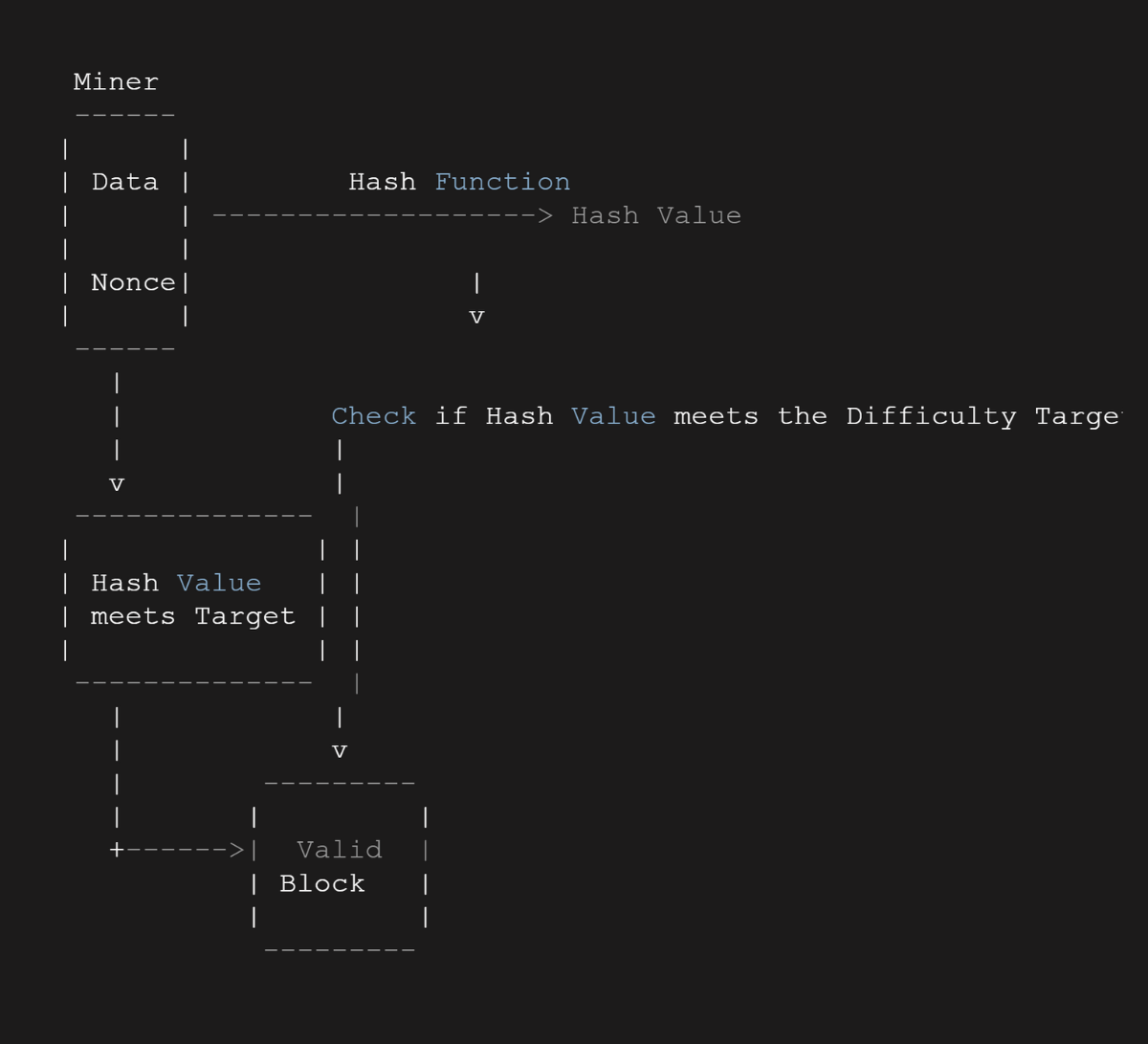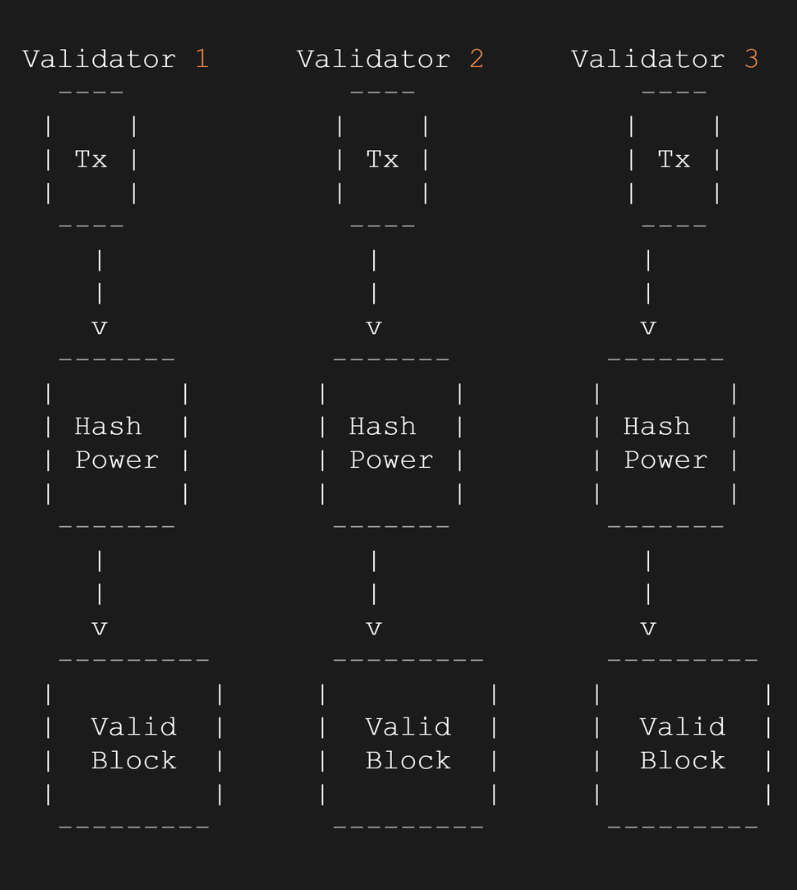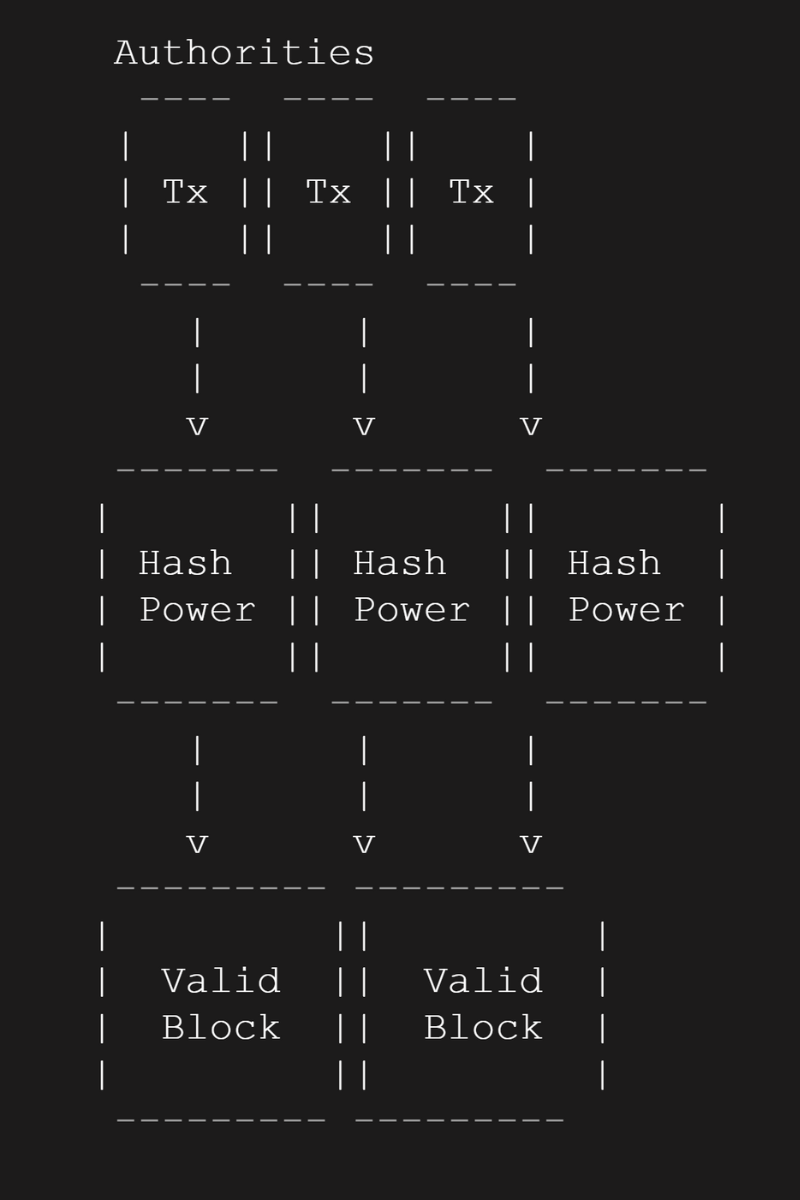
Are you curious about the security features of blockchain technology? Do you want to dive deep into the world of consensus mechanisms and understand how they ensure the integrity and reliability of blockchain networks? Look no further! In this comprehensive guide, we will explore different consensus mechanisms and their impact on blockchain security. Consensus mechanisms play a crucial role in maintaining the decentralized nature of blockchain networks, preventing fraud, and enabling trustless transactions. From the well-known Proof of Work (PoW) to the innovative Proof of Stake (PoS) and beyond, we will examine the inner workings of each mechanism, their strengths, weaknesses, and real-world applications. Whether you are a blockchain enthusiast, a developer, or simply someone interested in the future of digital currencies, this guide will equip you with the knowledge to navigate the complex world of blockchain security. Get ready to embark on an exciting journey into the world of consensus mechanisms and discover how they shape the future of secure transactions.
Don’t know what is blockchain then you can learn by spending 3 minutes here. Blockchain explained in 3 minutes
Don’t know the role of Cryptographic Techniques in Blockchain? learn here, Exploring the Role of Cryptographic Techniques in Enhancing Blockchain Security
Why consensus mechanisms are crucial for blockchain security
Consensus mechanisms are the backbone of blockchain security. They are responsible for ensuring that all participants in a blockchain network agree on the validity and order of transactions. Without a consensus mechanism, blockchain networks would be vulnerable to attacks and manipulation. The consensus mechanism acts as a decentralized decision-making process that enables trustless transactions and prevents fraudulent activities. It ensures that all participants in the network follow the same rules, agree on the state of the blockchain, and reach a consensus on which transactions are valid.
One of the key advantages of consensus mechanisms is their ability to prevent double-spending. Double-spending occurs when a user attempts to spend the same digital asset more than once. Consensus mechanisms ensure that only one transaction is considered valid, preventing the duplication of digital assets. By consensus, blockchain networks eliminate the need for intermediaries or trusted third parties, making them more secure and efficient.
Consensus mechanisms also play a crucial role in maintaining the decentralized nature of blockchain networks. Decentralization is one of the key principles of blockchain technology and ensures that no single entity has control over the network. Consensus mechanisms distribute decision-making power among the participants, making it difficult for any single entity to manipulate the system. This decentralization enhances the security and trustworthiness of blockchain networks, as they are not dependent on a single point of failure.
Proof of Work (PoW) consensus mechanism

Proof of Work (PoW) is the most well-known consensus mechanism used in blockchain networks, with Bitcoin being the prime example. In a PoW system, participants, known as miners, compete to solve complex mathematical puzzles to validate transactions and add them to the blockchain. The first miner to solve the puzzle is rewarded with newly minted tokens.
The security of the PoW consensus mechanism lies in its computational power requirements. Miners must invest significant computational resources to solve the puzzles, making it economically impractical to attack the network. Additionally, the PoW mechanism ensures that the majority of the network’s computational power is controlled by honest participants, further enhancing security.
However, PoW does have its drawbacks. It requires a large amount of energy consumption, making it environmentally unfriendly. The high computational requirements also limit the scalability of PoW-based blockchains. Despite these limitations, PoW remains a widely used and secure consensus mechanism.
Proof of Stake (PoS) consensus mechanism

Proof of Stake (PoS) is an alternative consensus mechanism that aims to address the energy consumption and scalability issues of PoW. In a PoS system, validators are chosen to create new blocks based on the number of tokens they hold and are willing to “stake” as collateral. Validators are selected randomly, weighted by the number of tokens they hold.
The PoS mechanism eliminates the need for miners to compete against each other, significantly reducing energy consumption. It also allows for faster block confirmation times and increased scalability compared to PoW. However, critics argue that PoS may lead to centralization, as validators with more tokens have a higher chance of being selected and gaining control over the network.
To mitigate the centralization risk, some PoS-based blockchains implement mechanisms like “slashing,” where validators can lose their staked tokens if they behave maliciously. Despite the ongoing debate, PoS consensus mechanisms have gained significant traction and are being adopted by various blockchain networks.
Delegated Proof of Stake (DPoS) consensus mechanism
Delegated Proof of Stake (DPoS) is a variation of the PoS consensus mechanism that introduces a reputation-based system. In a DPoS system, token holders vote for a limited number of delegates who are responsible for validating transactions and creating new blocks. These delegates are typically trusted entities or individuals within the network.
DPoS offers faster block confirmation times and higher scalability compared to PoW and PoS. By delegating the validation process to a limited number of trusted entities, DPoS reduces the computational requirements and allows for more efficient consensus. However, DPoS has been criticized for its potential centralization, as the selection of delegates is based on voting power.
To address this concern, some DPoS-based blockchains implement mechanisms like vote decay, where voting power diminishes over time. This encourages token holders to actively participate in the voting process and prevents the concentration of power in a few hands.

Practical Byzantine Fault Tolerance (PBFT) consensus mechanism
Practical Byzantine Fault Tolerance (PBFT) is a consensus mechanism designed for permissioned blockchain networks. Unlike PoW and PoS, PBFT assumes that the participating nodes are known and trustworthy. In a PBFT system, a leader is elected to propose a block, and the remaining nodes reach a consensus on its validity.
PBFT offers fast block confirmation times and high scalability, making it suitable for applications that require low latency and high throughput. However, PBFT requires a predefined set of trusted nodes, which limits its applicability to permissioned networks. It also assumes that the majority of the nodes are honest, making it vulnerable to attacks if a significant portion of the network is compromised.
Despite these limitations, PBFT is widely used in enterprise blockchain solutions where trust among participants can be established.
Proof of Authority (PoA) consensus mechanism

Proof of Authority (PoA) is another consensus mechanism designed for permissioned blockchain networks. In a PoA system, a limited number of trusted validators, known as authorities, are responsible for validating transactions and creating new blocks. These authorities are typically well-known entities or individuals within the network.
PoA offers fast block confirmation times and low energy consumption compared to PoW and PoS. By relying on trusted authorities, PoA eliminates the need for computational puzzles or token staking. However, PoA sacrifices decentralization, as the network’s security relies on the trustworthiness of the selected authorities.
PoA is often used in private consortium blockchains, where participants are known and trusted, and the focus is on efficiency and privacy rather than decentralization.
Comparison of different consensus mechanisms
Each consensus mechanism discussed in this guide has its strengths and weaknesses, making them suitable for different use cases.
- PoW is secure and battle-tested but consumes significant energy.
- PoS offers scalability and energy efficiency but may lead to centralization.
- DPoS allows for fast block confirmation and scalability but can be prone to centralization.
- PBFT is fast and scalable but requires a predefined set of trusted nodes.
- PoA provides fast block confirmation and low energy consumption but sacrifices decentralization.
When choosing a consensus mechanism, factors such as security requirements, scalability needs, energy efficiency, and network governance must be considered. It is essential to evaluate the trade-offs and select the mechanism that best aligns with the intended use case.
Factors to consider when choosing a consensus mechanism
When selecting a consensus mechanism for a blockchain network, several factors should be considered:
- Security: The consensus mechanism should provide robust security against attacks and ensure the integrity of the network.
- Scalability: The mechanism should be able to handle a large number of transactions per second to support growing user demand.
- Energy Efficiency: Energy consumption is a critical consideration, especially with the increasing concerns about the environmental impact of blockchain networks.
- Decentralization: If maintaining a decentralized network is a priority, the consensus mechanism should distribute decision-making power among participants and prevent centralization.
- Network Governance: The mechanism should align with the desired governance structure of the network, whether it be fully decentralized or permissioned.
By carefully considering these factors, blockchain developers and network participants can choose the most suitable consensus mechanism for their specific requirements.
Challenges and future developments in consensus mechanisms
While consensus mechanisms have come a long way in ensuring the security and reliability of blockchain networks, there are still challenges to overcome and room for improvement.
One of the main challenges is achieving a balance between security, scalability, and decentralization. Many consensus mechanisms sacrifice one or more of these aspects to achieve the others. Researchers and developers are constantly exploring innovative solutions that offer improved security, scalability, and decentralization simultaneously.
Another challenge is the environmental impact of energy-intensive consensus mechanisms like PoW. As the demand for blockchain technology grows, finding more energy-efficient alternatives becomes essential. PoS and other energy-efficient consensus mechanisms are promising steps towards addressing this challenge.
In addition to these challenges, consensus mechanisms need to adapt to emerging technologies and use cases. As blockchain technology expands beyond cryptocurrencies, new requirements and applications will arise. Consensus mechanisms will need to evolve to accommodate these changes and provide secure and efficient solutions.
Conclusion
Consensus mechanisms are the foundation of blockchain security. They enable trustless transactions, prevent fraud, and ensure the integrity and reliability of blockchain networks. From the well-known Proof of Work (PoW) to the innovative Proof of Stake (PoS) and beyond, each consensus mechanism has its strengths and weaknesses.
When choosing a consensus mechanism, it is crucial to consider factors such as security, scalability, energy efficiency, decentralization, and network governance. By selecting the most suitable mechanism, blockchain networks can achieve the desired balance between these factors and enable secure and efficient transactions.
As blockchain technology continues to advance, consensus mechanisms will play a vital role in shaping the future of secure transactions. Whether you are a blockchain enthusiast, a developer, or simply someone interested in the future of digital currencies, understanding consensus mechanisms is essential. Armed with this knowledge, you can navigate the complex world of blockchain security and contribute to the growth and adoption of this transformative technology.